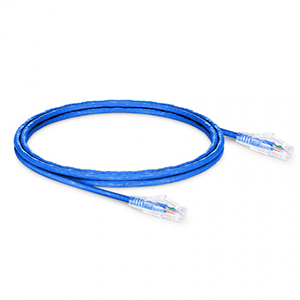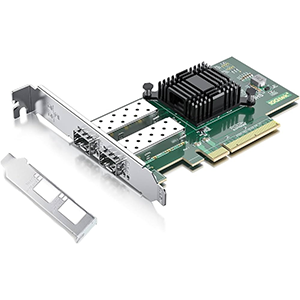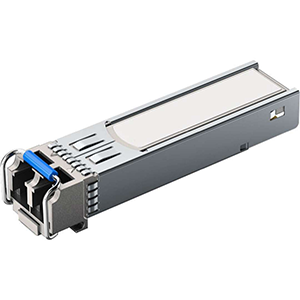Hello everyone! CAT5e Ethernet cable is undoubtedly the standard choice in network construction and has been widely recognized by the industry for its excellent transmission performance and wide range of applications. However, with the advent of the Internet of Everything era, the demand for network bandwidth and transmission rate is getting higher and higher. You may be concerned about whether CAT5e can support Gigabit Ethernet, a new generation of network technology.
I’m excited to answer this important question in detail today to help you fully understand the capabilities and limitations of CAT5e cable in supporting Gigabit Ethernet, as well as suitable alternatives. I believe that through this analysis, you will be able to choose the best transmission solution for your network and help your enterprise move into a new stage of digital transformation.
Features of CAT5e Ethernet cable
Let me introduce you to the main features of CAT5e Ethernet cable:
CAT5e standard and its main technical indicators:
- CAT5e is a common standard for Ethernet cables, and its full name is “Category 5 Enhanced”.
- It has performance optimization and improvements based on the CAT5 standard and was officially released in 2001.
- Main technical indicators include: transmission bandwidth up to 1000 Mbps, low near-end crosstalk, etc.
Advantages of CAT5e cables in Ethernet applications:
- Excellent bandwidth performance, supporting Ethernet transmission rates up to 1 Gbps.
- Strong anti-interference ability, can effectively reduce near-end crosstalk and far-end crosstalk.
- Good compatibility and can be interconnected with most Ethernet devices and connectors.
- The cost is low and it is one of the most common, economical and practical choices in current Ethernet applications.
Transmission performance specifications of CAT5e cable:
- Bandwidth: Supports up to 1000 Mbps (Gigabit Ethernet).
- Frequency range: up to 100 MHz.
- Near-end crosstalk (NEXT): ≤-54 dB.
- Far-end crosstalk (FEXT): ≤-43 dB.
- Characteristic impedance: 100 Ω ± 15%.
- Attenuation: ≤22.0 dB/100 m @100 MHz.
In general, CAT5e Ethernet cables have excellent performance in terms of bandwidth performance, anti-interference ability, and cost advantages, and have become the most widely used cable standard in current Ethernet applications. Its transmission performance specifications are also fully capable of meeting the requirements of Gigabit Ethernet and higher speeds.
Technical requirements for Gigabit Ethernet
Let me introduce to you the main technical requirements of Gigabit Ethernet:
The main technical features of Gigabit Ethernet:
- Transmission rate: Supports data transfer rate up to 1000 Mbps (1 Gbps).
- Physical layer standard: Adopts the 1000Base-T physical layer defined by the IEEE 802.3ab standard.
- Application scenarios: Widely used in high-speed interconnection scenarios such as data centers and enterprise networks.
- Transmission distance: Supports unshielded twisted pair (UTP) transmission distance up to 100 meters.
Gigabit Ethernet performance requirements for transmission media:
- Bandwidth characteristics: Need to support transmission frequency bandwidth up to 100 MHz.
- Signal integrity: Requires extremely low near-end crosstalk (NEXT) and far-end crosstalk (FEXT).
- Impedance matching: 100Ω±15% characteristic impedance matching performance is required.
- Cable quality: High-quality shielded/unshielded cables that meet CAT5e or CAT6 standards must be used.
Key technical indicators for realizing Gigabit Ethernet:
- Transmission bandwidth: Supports data transmission rate of 1000 Mbps.
- Near-end crosstalk (NEXT): should be less than -54 dB.
- Far-end crosstalk (FEXT): should be less than -43 dB.
- Attenuation characteristics: The attenuation under 100 meters of cable should be less than 22 dB.
- Characteristic impedance: should be 100Ω±15%.
In short, Gigabit Ethernet has high technical requirements for transmission media. High-performance cables that meet CAT5e or CAT6 standards must be used and meet key indicators such as bandwidth, crosstalk, and impedance to ensure the reliability of Gigabit Ethernet. Reliable transmission. Optimization of these technical indicators is the key to realizing high-speed Ethernet applications.
Can CAT5e support Gigabit Ethernet
Let me analyze for you whether CAT5e cable can support Gigabit Ethernet:
CAT5e cable performance compared to Gigabit Ethernet requirements:
- Transmission rate: CAT5e supports up to 1000 Mbps and meets Gigabit Ethernet requirements.
- Transmission bandwidth: CAT5e supports up to 100 MHz frequency, consistent with Gigabit Ethernet requirements.
- Near-end crosstalk (NEXT): CAT5e can reach ≤-54 dB, meeting the Gigabit Ethernet standard.
- Far-end crosstalk (FEXT): CAT5e can reach ≤-43 dB, meeting the requirements of Gigabit Ethernet.
- Characteristic impedance: CAT5e is 100Ω±15%, which also meets the requirements.
CAT5e limitations in transmission rate and bandwidth:
- Although CAT5e theoretically supports 1000 Mbps transmission rate, in practice there will be some margin.
- The highest supported frequency of CAT5e is 100 MHz, which is insufficient compared to CAT6’s 250 MHz.
- In complex electromagnetic environments, the anti-interference performance of CAT5e may be affected to a certain extent.
Does CAT5e have the ability to support Gigabit Ethernet:
- From a technical perspective, CAT5e basically meets the main requirements of Gigabit Ethernet.
- In terms of key parameters such as transmission rate, bandwidth, and crosstalk, CAT5e performs relatively well.
- In complex environments, the performance of CAT5e cables may be slightly inferior, but it is still barely supported.
- In summary, CAT5e cables can barely support Gigabit Ethernet, but CAT6 cables are more ideal.
So, in terms of performance specifications, CAT5e cables basically meet the technical requirements of Gigabit Ethernet and can barely support Gigabit Ethernet applications. But in comparison, CAT6 cable will provide more ideal transmission performance and is more suitable for complex Gigabit Ethernet environment.
Alternatives supporting Gigabit Ethernet
Let me introduce you to other cable alternatives that support Gigabit Ethernet:
CAT6 Ethernet Cable:
- Technical specifications: Supports transmission rate up to 10 Gbps, maximum frequency 250 MHz.
- Performance advantages: Compared with CAT5e, it has better bandwidth and anti-interference ability.
- Applicability: It can fully meet the needs of Gigabit Ethernet or even 10 Gigabit Ethernet.
CAT6a Ethernet Cable:
- Technical specifications: Supports transmission rate up to 10 Gbps, maximum frequency 500 MHz.
- Performance advantages: Based on CAT6, the anti-interference ability is further optimized.
- Applicability: One of the best choices for implementing 10 Gigabit Ethernet.
Fiber optic Ethernet cable:
- Technical specifications: Supports ultra-high-speed transmission up to 100 Gbps.
- Performance advantages: huge bandwidth, completely immune to electromagnetic interference.
- Applicability: Suitable for application scenarios requiring ultra-long distance and ultra-high-speed transmission.
In summary:
- CAT6 and CAT6a are currently the best Gigabit Ethernet cable options and can fully meet the needs of 1 Gbps Ethernet.
- CAT6a is the preferred solution for implementing 10 Gigabit Ethernet.
- Fiber optic Ethernet cables can support more ultra-high-speed Ethernet transmission and are suitable for scenarios such as data centers.
Compared with CAT5e, these cables have greatly improved bandwidth and anti-interference performance, and can better meet the technical requirements of Gigabit Ethernet and even higher-speed Ethernet. When choosing, you should weigh it based on the needs of the actual application scenario and choose the most appropriate cable solution.
Summary
To sum up, although CAT5e Ethernet cable is still a good choice in many scenarios, its performance can no longer fully meet the needs of new generation networks to achieve high-speed Gigabit Ethernet transmission. We recommend that you consider upgrading to more powerful CAT6, CAT6a cables, or even high-bandwidth fiber optic cables.
No matter which solution you ultimately choose, we will do our best to provide you with professional products and technical support. If you have any questions during the network upgrade and transformation process, please feel free to communicate with us at any time. Let us join hands to open a new era of network transmission and create a better digital future!
Can Cat5e Do Gigabit FAQ
Yes, Cat5e cables are capable of supporting Gigabit Ethernet (also known as 1000BASE-T) networks.
Cat5e cables can support Gigabit Ethernet speeds up to 1000 Mbps (1 Gbps) over distances up to 100 meters (328 feet).
To ensure reliable Gigabit Ethernet performance, the Cat5e cable must be of good quality, properly installed, and the network equipment must also support Gigabit Ethernet.
Compared to the older Cat5 standard, Cat5e provides improved performance and can reliably support Gigabit Ethernet, whereas Cat5 is generally limited to 100 Mbps Fast Ethernet.
The main limitation is the cable length – Cat5e is limited to 100 meters for Gigabit Ethernet. Exceeding this distance may result in signal degradation and performance issues.
While it is possible to use Cat5e cables for longer distances, it is generally not recommended, as the performance and reliability of the Gigabit Ethernet connection may be compromised.
Factors like cable quality, proper installation practices, and ensuring the network equipment supports Gigabit Ethernet are crucial for achieving the best performance.
Higher-performance cable standards, such as Cat6 and Cat6a, provide additional headroom and can support Gigabit Ethernet over longer distances compared to Cat5e.
Yes, older or poorly maintained Cat5e cables may not be able to reliably support Gigabit Ethernet, especially over longer distances, due to potential degradation of the cable.
Best practices include using high-quality Cat5e cables, following proper installation guidelines, and testing the connections to ensure optimal Gigabit Ethernet performance.




